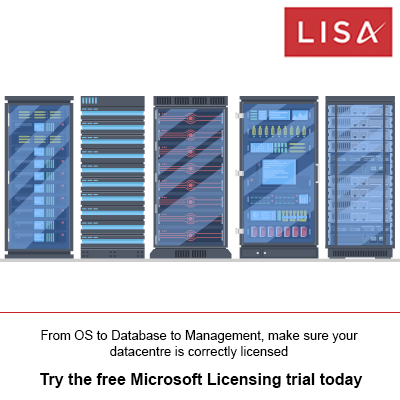Using Microsoft SCCM for SAM [Expert Panel]

Custom Tweaks To Enhance Performance
This is the second expert panel following valued contributions from industry experts on the NHS exiting their Enterprise Agreement last month. If you would like to contribute to future expert panels please give me a shout.
This month the expert panel discussion is focussed on using Microsoft SCCM for the purposes of SAM.
There is a definitive trend towards using Microsoft SCCM with SAM, but with a little help using some enhancements.
There are a number of issues at play here that work in favour of SCCM:
- BUT IT’s FREE ($) – SCCM is bundled aggressively with other larger Microsoft purchases and in the current climate organisations are pressured to ‘do more with less’ and make best use of existing investments. This all works in favour of large incumbent framework tools.
- MORE AGENTS – There is a resistance against using yet another agent for SAM and lack of knowledge around the shortcomings. “Can’t we use SCCM for that?”
- POLITICS – It’s not just a technology issue but a political one. An organisation with as few as 1,000 devices might have a dedicated head assigned to SCCM. Larger organisations have whole divisions. The suggestion of ripping out SCCM for SAM usually goes down like a lead balloon. SCCM is usually a long term strategic choice and its remit goes way beyond SAM and ITAM.
$ – There is no such thing as a free lunch. You don’t get it free; you get it aggressively bundled as part of that whopping agreement you paid for.
I remember trying to sell SAM tools against SMS in the past and it always felt like swimming against the tide. Vendor marketing departments have cottoned on to this and have started to position their tools as ‘bolt-on’, ‘snap-ins’, plug-ins’ or ‘add-ons’ for Microsoft SCCM. Psychologically this feels better for the person signing the cheque (I am enhancing my existing investment not changing strategy). This also sits better with the SCCM team who are having their technology enhanced not threatened.
Expert Panel Discussion
With this in mind I asked the expert panel:
- What are the strengths and weaknesses of Microsoft SCCM when used for SAM?
- What advice would you share with clients using Microsoft SCCM?
Phil Heap, Head of Products and Services at FAST Ltd
At FAST we have around 2,000 customers working through our SAM and Licence Compliance Programme and they are using a variety of inventory and licence management toolsets, on which we provide selection advice
Some of those customers have successfully used SCCM for asset management purposes and have reached the FAST Gold accreditation, but there are limitations. Microsoft SCCM supports Microsoft Operating systems only. So what do you do if you are using other platforms such as Unix and Linux servers?
In my experience, people use SCCM for SAM because it’s there, it’s an investment already made. Not necessarily because they think it will be the best tool for the job.
Let’s face it, no one tool is going to give you everything you need for effective SAM, and despite what the vendors might try and tell you in the sales pitch, the inventory data captured by the tool, whilst important, is a relatively small, part of the overall picture when it comes to Software Licence compliance and implementing SAM processes.
Tools can gather lots information quickly and present it to you, but it’s up to you then to know how to use that data and make a call on how extensive and accurate that data is. SCCM can help you do this but it might not help you report and present the data as well as other tool sets that have specialised in Software Asset Management for many years.
Gemma Poole of UK SAM Specialist CRC
“System Center Configuration Manager (ConfigMgr or SCCM), formerly Systems Management Server (SMS), is a systems management software product by Microsoft for managing large groups of Windows-based computer systems. SCCM provides remote control, patch management, software distribution, operating system deployment, network access protection, and hardware and software inventory.
Historically, SMS didn’t have the greatest reputation, and required expert technical resource to deploy and manage the system. Microsoft has made considerable investment into both SCCM 2007 and more recently SCCM 2010. They have improved the install process, which is now more simplified, making it much less time consuming, than earlier versions, to install. The overall application looks very similar to AD.
We have numerous clients using SCCM as it provides a range of functionality including better than average software audit capabilities. SCCM brings back both ‘EXE’ (the common filename extension denoting an executable file) and ‘add and remove’ programmes, which enables us to identify not only suites and packages but also to interrogate hidden files, useful when looking for games or unauthorised programmes.
On the downside the User Interface (UI) is not great for either management information or the audit data. As a result of this, we would advise customers to integrate SCCM with a software license compliance and management solution.
The investment into SCCM can be relatively low compared to other discovery tools. Our experience has shown that most clients are unaware that the Client Access License (CAL) for SCCM is included into Microsoft’s Core CAL suite. So for clients who have purchased Core CAL, through a volume license agreement, they will only need to factor in the cost of obtaining a license for Configuration Manager Server (with or with-out SQL) and the associated Enterprise and Standard Management licenses.
This does not negate the fact that other discovery tools have some unique qualities, not available in SCCM, in fact we welcome, where possible, to have multiple data sources as this increases the accuracy when reporting back to the client.”
Jeff Kelsey, Express Metrix VP of Products:
“SCCM delivers a broad spectrum of functionality including software deployment, patch management, and software inventory.
SCCM’s ability to collect software executable information provides customers with a baseline of information that can be leveraged for SAM assessments, but does not necessarily provide the depth of license management capabilities many organizations require. Because of this, it’s very common for customers to consider additional products that are more focused on that discipline.
For example, license reconciliation, tracking software purchases, collecting software usage data, and SAM reporting are areas that are typically provided by third party tools.”
Flexera Software’s Vincent Brasseur, Director of Product Management,
Microsoft’s SCCM is the market leader in desktop software deployment, configuration management and inventory collection. The raw software inventory data is used primarily for day to day software deployment operations but has limited value for software asset management and license optimization.
SCCM provides application recognition capability, which is necessary to get a usable understanding of what software is installed across the IT estate. SCCM’s inventory agent can also collect application usage data, which shows what software is not only installed but actually being used. All of these are important pieces of an overall software asset management (SAM) and license optimization program, but knowing what is installed is only the first step in the process.
For end-to-end software asset management and license optimization, additional features are needed that do not exist today in SCCM. They are delivered by other tools that integrate with SCCM and use it as an inventory and application usage data source. They provide more extensive license management and license optimization capabilities based on ITIL standards. These tools add some or all of the following capabilities:
- Collection of purchasing data from procurement or finance systems and reconciliation of purchased licenses versus installed software. A stock keeping unit (SKU) library is the only reliable way to automate this step by determining exactly what has been purchased according to the PO line item SKUs, and linking those purchases to the installations.
- Reconcile inventory and purchasing data with HR and enterprise data. This will add a needed business view to the reports. Licenses, purchase orders, installations and computers can be tied to enterprise groups (locations, cost center, business unit) or identified users.
- Provide advanced SAM capabilities. This potentially includes many features, such as reporting on license consumption per enterprise business unit, location, cost center or user, providing an audit trail and historical data on installations and licenses, being able to assign individual licenses to users or devices or allocate a license quantity to a department or a site, calculating the purchase versus installed compliance status of each license based on its metric.
- Automated management of license agreements and contracts. This can include such things as wizards to help create contract hierarchies and payment schedules. For Microsoft Enterprise Agreements, next generation software asset management tools can estimate upcoming true-up payments based on software utilization. For Microsoft Select and Select Plus Agreements, the tools can show point consumption over time, for each enrolment.
- Track application usage to enable license re-harvesting when there are unused or under-used applications in one area of the organization, and reallocate those licenses to another group. Usage data can also be used to reduce on-going maintenance payments when the software is not even installed, for example.
- Application of vendor Product Use Rights to optimize license consumption. By taking advantage of use rights, such as right of second use, multiple installations and downgrade rights, license optimization tools can reduce the number of new licenses that must be purchased at true-ups and renewals.
- Recycling of licenses allocated to hardware to be retired.
If you would like to contribute to future expert panel discussions please sign up to the notifications list on this page.
Can’t find what you’re looking for?
More from ITAM News & Analysis
-
Software Vendor Insights: What do the numbers tell us about the opportunities for ITAM negotiations?
What software vendor insights can be gained from the latest financial results from Amazon, Google, Broadcom, Salesforce, IBM and SAP? An important part of ITAM is paying close attention to the health of the companies we ... -
Flexera is first SAM tool vendor verified for Oracle E-Business Suite applications
Flexera has announced that it has been verified as the first software asset management (SAM) tool vendor for Oracle E-Business Suite applications. Almost anyone with an Oracle estate will be familiar with the company’s License Management ... -
ITAMantics - March 2024
Welcome to the March 2024 edition of ITAMantics, where George, Rich and Ryan discuss the month’s ITAM news. Up for discussion this month are. Listen to the full ITAMantics podcast above or queue it up from ...




